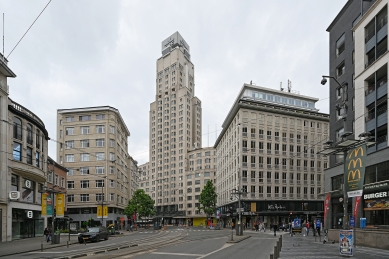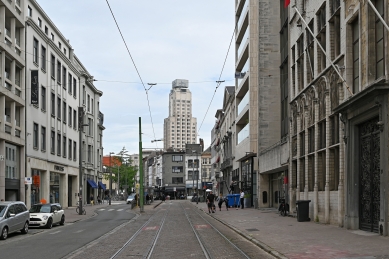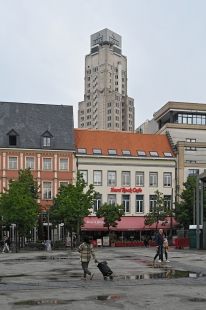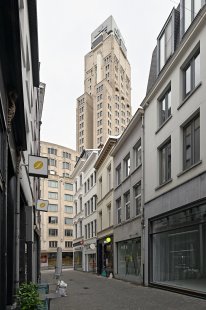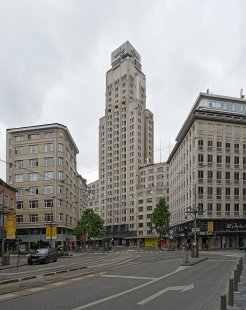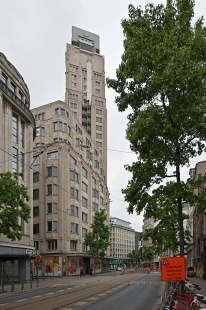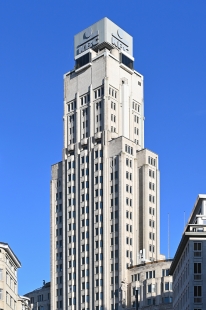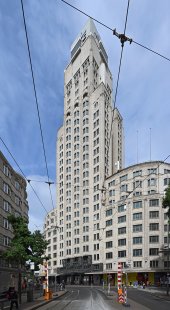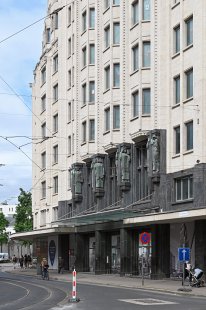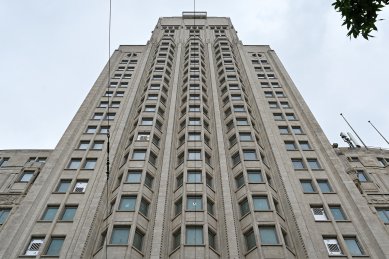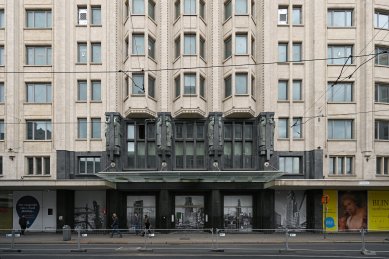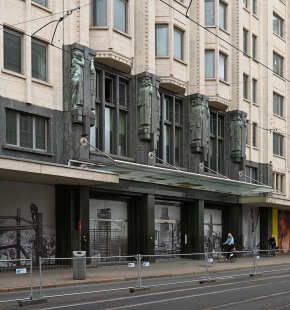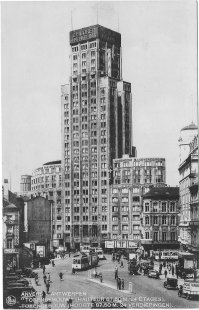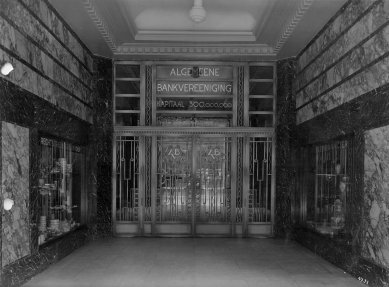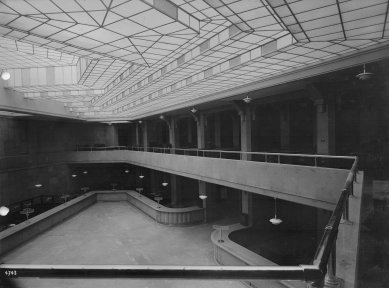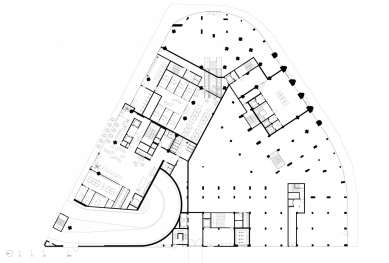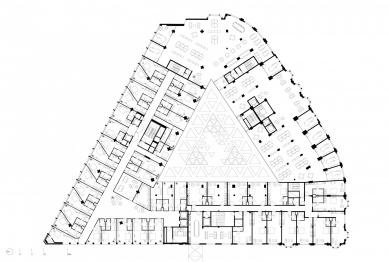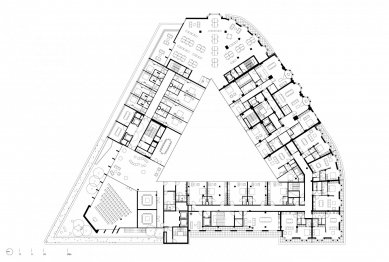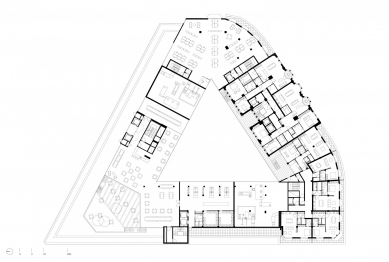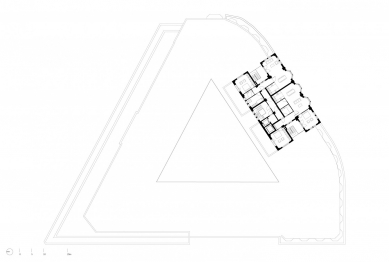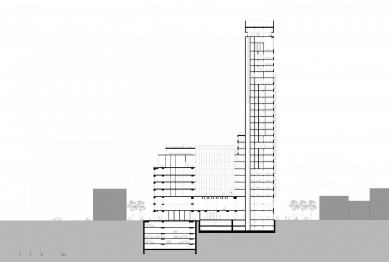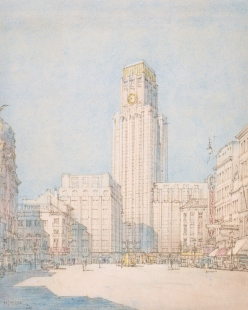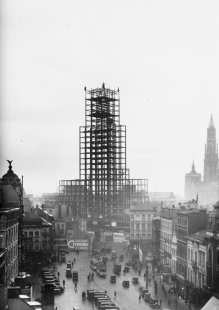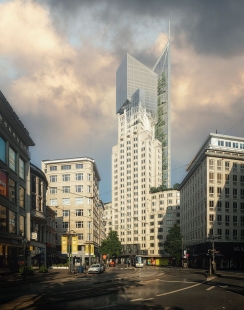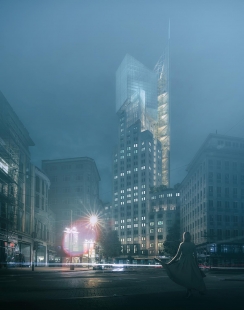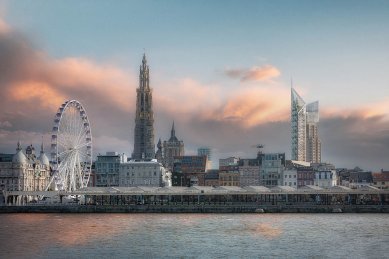
Farmer’s Tower
Boerentoren

Ahead of the centenary of Belgian independence in 1930, Antwerp, an important harbour city on the River Scheldt, was elected to host a major international exhibition on ‘Colonies, Seafaring and Flemish Art’. In the run-up, in 1928, the first design for an 87.5 meter high residential tower, then the tallest in Europe, by architects Jan Vanhoenacker and Jos Smolderen was approved on the advice of city architect Emiel Van Averbeke. Because of the stake of the Farmers Union in the bank that commissioned the project, it was soon dubbed the “Farmer’s Tower”. Construction of the brick and stone-clad steel structure started in 1929. At the top was a large water tank, and just below it, on the twenty-fourth floor, a publicly accessible panorama hall, which opened in March 1932. After having attracted up to 150,000 people visitors per year, it closed to the public in the early 1970s. The building became a listed monument in 1981 based on its historic value of public interest. An additional assessment in 2019 also recognised the architectural and artistic value.
Docomomo Belgium
0 comments
add comment


